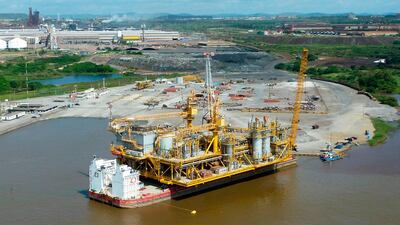In the baking hills of Iran’s Bakhtiari countryside, after seven years of fruitless toil, engineer George Reynolds and his team finally struck oil in May 1908. It was a similar story of persistence in the face of sweaty adversity at Mene Grande in Venezuela in 1914, and Bahi in Libya in 1958.
Yet, in an unprecedented occurrence after a century of petro-plenty, these three leading oil players and Opec members are today market nonentities.
The causes are different in each case. Iran continues to be a significant producer for its domestic market, but its exports of some 2.5 million barrels per day in 2018 have shrunk almost to zero in the face of US sanctions.
Only China still pays for its oil, and in an oversupplied market, does not have much incentive to go through the tricky evasions required. Iran’s exports have been interrupted before, by the western boycott from 1951 to 1953 after nationalisation by prime minister Mohammad Mossadeq, then again during the 1979 revolution, but the country’s vulnerability today is a surprise.
Venezuelan output has been in a long decline since the days of El Comandante Hugo Chavez and the general strike of 2002 to 2003. But the tumble from more than 3 million bpd really steepened in 2016, then in 2019 as the US tightened sanctions after the disputed presidential election.
Last month, state company PDVSA estimated its output at just 374,000 bpd, the lowest since 1945. Shortages of power, equipment and finance, as well as a lack of demand for the country’s heavy oil amid the coronavirus-induced slump, have ravaged the industry.
Libyan production has been up and down like a dune buggy since the 2011 overthrow of Muammar Qaddafi. However, since January, the blockade of its oil ports has cut about one million bpd of output to a trickle of less than 90,000 bpd from its offshore fields alone. The Government of National Accord in Tripoli is now trying to reopen two of the largest fields in the country’s south-west.
US action has been key to the slumps in Iran and Venezuela, less so in Libya. Their elimination as competitors has helped create market space for US shale oil over the past few years, which competes mostly with Libya’s very light oil. The rise of shale allowed president Barack Obama and his successor Donald Trump to impose stringent sanctions on Tehran without worrying about an oil price increase.
However, the ban on imports of Venezuela’s heavy crude increases American refineries’ need for Middle Eastern oil to blend. Mr Trump reportedly told former national security adviser John Bolton that invading Venezuela would be “cool”, but sanctions have not shifted President Nicolas Maduro.
Russia has a curious role in all three. It supports Iran diplomatically, if not practically.
Russian oil companies negotiated for projects there before sanctions were reimposed, and Moscow and Tehran periodically talk about swaps of Iranian oil, which never materialise.
It also backs General Haftar’s Libyan National Army and prints currency for the eastern administration.
However, Russia's involvement in Venezuela is the deepest. State oil company Rosneft lent PDVSA about $6.5 billion (Dh23.87bn) and faced US sanctions for its dealings there, before selling its Venezuelan assets to a Russian government entity set up to avoid those sanctions. Still, Russia gains from having three significant petroleum competitors out of action, in addition to nullifying competition from their gas reserves in the key European markets or in global liquefied natural gas.
The result of internal mismanagement and conflict, US sanctions and Russian and Chinese inability or lack of desire to intervene strongly has brought three major petroleum industries to their knees.
Two founder members of Opec in 1960 and early joiner Libya (1962), have no power in the group’s deliberations, and are not even assigned production targets. This is a great help to the rest of the Opec+ group as they try to balance the market during an unprecedented collapse in demand. But it is a dangerously unstable equilibrium.
Libya’s production could bounce back depending on the shifting fortunes of its civil war. A recovery in Iranian exports would depend on the US re-entering Mr Obama’s nuclear deal, or striking a new arrangement, probably after a Democratic win in the November elections.
Venezuela is the hardest to fix because of almost two decades of neglect and decline, and its inherently high cost and technically difficult fields. A post-Maduro government would have American sanctions lifted and probably open up to international investors. Yet even the current, nominally socialist, administration has proposed radical reform plans, including allowing private companies to operate fields and refineries.
As PDVSA itself admits, “Venezuela's oil production is no longer strategically important for the world ... To boost production and make Venezuela a protagonist in the oil world again, the urgent restructuring of PDVSA is necessary".
So, some quite foreseeable political developments could bring 4.5 million bpd or so back from next year. Opec+ cuts are scheduled to be easing gradually by then, while oil demand may still be weak depending on progress on slowing the spread of coronavirus and rebuilding economies.
After a decade in which geopolitics have mostly taken oil off the market, three major players could return. Should they not come back soon, their outlook is grim in a world of growing non-oil alternatives and climate change policy.
Decisions over the next year in Tripoli, Tehran and Caracas – and Washington – can make life a lot more complicated for oil-producing peers.
Robin M. Mills is CEO of Qamar Energy, and author of The Myth of the Oil Crisis


